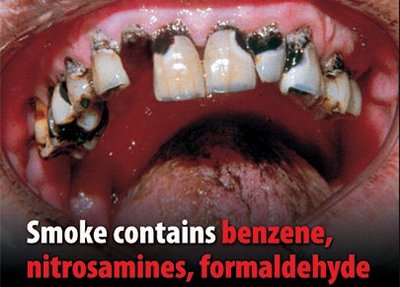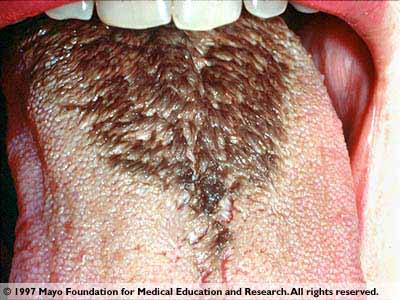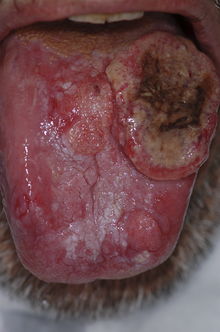
Source: http://pediatricdentists.blogspot.com.au
A recent tweet to Dr. Husna (our dental columnist) highlighted one of the dangers of smoking which is often forgotten, namely oral health and its effects due to tobacco smoking. The tweet went, “Does smoking affect the gums?”, and the answer is a resounding… YES. However, it does not stop there.
Introduction
In the article on how to quit smoking, we elucidated to the many health professionals who may be able to assist in quitting smoking. Among the many mentioned include dental practitioners or dentists. Research conducted locally and internationally has shown that dentists are equally effective in providing tobacco dependence treatments. Research published by the Nicotine Addiction Research & Collaborating Centre (NARCC) found that many of our local dentists are also keen to help. For dentists who are busy and may not have the time, fret not as they are adequately knowledgeable to refer you to the many local quit clinics available. In fact, some universities such as University Kebangsaan Malaysia (UKM) have a quit smoking clinic within their premises. The approach to tobacco dependence treatment may be different due to their setting and practice; however, they are available and eager to assist those interested to quit smoking.
Dangers of Smoking to Oral Health
There are many ways tobacco smoking may affect your oral health. Most of this harm is due to the tar and polycyclic aromatic hydrocarbons released during tobacco cigarette smoking. They can cause discolouration, bad breath, cancers and for those who are receiving some form of dental treatment, poor wound healing as well. Let us consider these issues individually.
Discolouration
Perhaps the most immediate and most noticeable effect of smoking is tooth discolouration, also known as tobacco staining. Tobacco stains vary from yellow, brown, dark brown and even black. The degree of tooth discolouration depends on frequency and duration of smoking. The more and longer you have been smoking, the darker the staining. Tobacco stains initially manifest as superficial stains on the surface of the teeth which can be easily removed by scaling and polishing. However, as the duration of contact increases due to the addictive nature of tobacco smoking, the staining penetrates into micro-cracks on the tooth surface and the staining therefore becomes almost permanent and much harder (nearly impossible) to remove. These stains can be a great source of embarrassment and also distress for many people.
Bad Breath
Bad breath or halitosis is a distinctive consequence of tobacco smoking. Often this smell is produced by the inhaling and exhaling of tobacco smoke. In chronic tobacco smoking however, halitosis may also increase with poor mouth hygiene due to plaque accumulation, gum diseases and other oral mucosa damage in the mouth. Conversely, with early smoking cessation, bad breath may be able to be minimised and can even regress back to normal if there is minimal damage to other structures within the mouth.

Source: http://www.riversideonline.com
Hairy Tongue
The tongue is covered with hairlike structures (filiform papillae) which are positioned all over the surface of the tongue. They have no taste buds but are thought to be responsible for the mechanical aspects of the tongue function which is mainly to help give the tongue a cleaning and rasping action. On continual tobacco smoking, this hair-like structure tends to overgrow and get discoloured where they become elongated and thickened. Food, dead cells and other material become trapped here and give the appearance of a black, hairy tongue. One often doesn’t recognise that there are millions of bacteria in the mouth, tenants of the mouth which can change its form to become more aggressive. These same bacteria also release broken down products, which may consequently lead to increasing halitosis (bad breath).
Gum Disease
An overwhelming amount of data points to smoking as a major risk factor for increasing the occurrence and severity of gum diseases. On average, smokers are four times more likely to have gum diseases compared to individual who have never smoked. However, because smoking alters the body defence response mechanism, the initial stages of gum disease (mild gingivitis) might be masked as there is decreased gingival bleeding in mild cases of gingivitis but destruction of bones surrounding the teeth occurs below the gum layer. If gum disease (periodontitis involving the deeper layer of gum and the bone supporting the teeth) is allowed to progress, consequently it will result in unsightly gum line recession and severely mobile teeth, which will result in tooth loss. At this stage, your teeth may appear elongated and misaligned. Interestingly however, it is observed that former smokers have less risk for periodontitis than current smokers. This may suggest that the effects of smoking on gum are reversible with smoking cessation.
Poor Wound Healing
Smoking has been associated with 2-3 fold increases in developing gum diseases, and the effects of tobacco smoking on gum are more marked in younger smokers. Smokers also do not respond well to treatment and surgery because the chemicals in cigarette alter normal tissue response and healing properties. This can cause simple dental procedures (tooth extractions for example) to heal longer than usual or become more painful and infected as a result. The good news is that it’s never too late to quit smoking as there are strong evidence that smoking cessation results in improved gum health and healing properties of your body.

Source: http://en.wikipedia.org/wiki/Oral_cancer
Oral Cancers
Often, smokers do not think they can contract lung cancer despite evidence proving otherwise. For example, the British doctor study by Doll and Hill. Unfortunately, the chances of developing oral cancers are also increased with tobacco smoking. Local studies have found that oral cancer rates are doubled with tobacco smoking. These findings have also been supported by international publications. Tobacco smoking can lead to leukoplakia (whitish plaque on the oral mucosa) which cannot be wiped off. Leukoplakia should NOT be ignored as they can lead to oral cancers. The transition from a benign to a malignant lesion cannot be predicted.
Stand in front of a mirror, open your mouth. Lift your upper and lower lips. Next, protrude your tongue and move it right and left. Do you notice any abnormalities? Are there any ulcers that have been there for weeks? If you do detect anything abnormal, it is advisable that you pay a visit to your friendly dentist.
Conclusion
In a nutshell, it is clear that tobacco smoking affects your gums and other aspects of the mouth. It is imperative that you try to quit where and when possible. Dentists have a duty just like any other medical profession to help you with treating your mouth and teeth as well as to reduce risk factors that can lead to the initial reason for your visit.
Help to quit smoking is listed here: https://www.mmgazette.com/quit-smoking-for-the-new-you-dr-amer-siddiq/
This article was written by both Dr Amer Siddiq and Dr Husna Razak for the MMG. Dr Amer is a guest columnist for the MMG and is involved with research to empower dentists in tobacco control. He is a psychiatrist and smoking cessation specialist. He is the editor of the Tobacco Control Newsletter aimed for health professionals and a guest columnist for the Malaysia Dental Association newsletter on tobacco dependence treatment. Dr Husna is a regular columnist for the MMG and you can learn more about her at The Team page.
[This article belongs to The Malaysian Medical Gazette. Any republication (online or offline) without written permission from The Malaysian Medical Gazette is prohibited.]
References:
- Amer Siddiq, A. N., Aisah, A. R., Nurul Asyikin, Y., Rusdi, A. R., Muhsin Ahmad Zahari, M., Aida Syarinaz, A., . . . Habil, H. (2009). Empowering dental practitioners into the smoking cessation program – A joint venture. Paper presented at the 14th Malaysian conference on Psychological Medicine, Kuala Lumpur Malaysia.
- Amer Siddiq, A. N. (2012). Letters to the Editor: Dentist in Asia and Smoking Cessation. International Journal of Oral Health, 8, 8.
- Nurul Asyikin, Y & Amer Siddiq, A. N. (2011).The role of treating nicotine addiction prior to treatment of periodontal diseases.ASEAN Journal of Psychiatry, 12(1).
- Alkhatib, M. N., Holt, R. D., & Bedi, R. (2005). Smoking and tooth discolouration: findings from a national cross-sectional study. BMC Public Health, 5(1), 27.
- Razak, A. A., Saddki, N., Naing, N. N., & Abdullah, N. (2009). Oral Cancer Presentation Among Malay Patients in Hospital Universiti Sains Malaysia, Kelantan. Asian Pacific Journal of Cancer Prevention, 10, 1131-1136.

In a nutshell, it is clear that tobacco smoking affects your gums and other aspects of the mouth. It is imperative that you try to quit where and when possible. Dentists have a duty just like any other medical profession to help you with treating your mouth and teeth as well as to reduce risk factors that can lead to the initial reason for your visit.